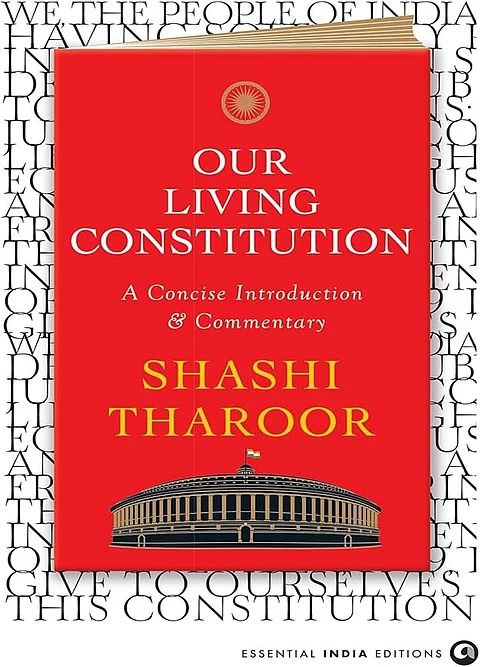

The longest written constitution in the world is the Indian Constitution. A synthesis of the most advantageous aspects of constitutions worldwide. In the face of so much diversity, many people hoped it would fall apart, but the reality of India today is that we have persevered and maintained a robust, democratic country. Dr B R Ambedkar made sure to make clear his position against this criticism in his numerous speeches, even though it is well known that the Indian Constitution was frequently criticized for being plagiarized.
Our dynamic Constituent Assembly and the Drafting Committee allowed flexibility in the structure of the Indian Constitution while maintaining what shouldn't be altered. The document has undergone numerous amendments to accommodate the nation's changing demands.
"Our Living Constitution—A Concise Introduction and Commentary" by Shashi Tharoor is an engaging and understandable examination of the history, development, and continued significance of the Indian Constitution. Beginning with a striking account of the momentous adoption of the Constitution by the Constituent Assembly on November 26, 1949, Tharoor highlights the constitution's creative splendor as well as the deep aspirations it represented for a newly sovereign country. He deftly blends historical account with modern analysis, emphasizing the Constitution as more than just a set of laws but as a dynamic constitution that continues to influence and be influenced by the goals and difficulties of Indian democracy.
Shashi Tharoor's short book, which is less than 100 pages long, is intended to serve as a succinct introduction and commentary on the Indian Constitution, as the subheading indicates. Our constitution really is a document of vision. Tharoor decides to clarify this reality in the nine chapters. With a theme structure, the book moves from the historical background of constitution-making to an analysis of important concepts including federalism, fundamental rights, and striking a balance between tradition and modernity.
By citing world leaders like Nelson Mandela and scholars like Thomas R Metcalf, he places the Indian experience in a larger international framework and supports the idea that India's constitutional journey is both distinctive and important on a worldwide scale.
India's Constitution is a "beacon of hope" for the globe and "provides inspiration in preparation of a new South African Constitution," according to Nelson Mandela, the former president of South Africa and an unmatched moral voice for freedom. Mandela believed that "our efforts in the formulation of a new constitution will reflect the work and ideas of this great son of India (Ambedkar)."
Babasaheb was clear in his warning. As he introduced the Constitution to the Constituent Assembly, he stated, “Howsoever good a constitution may be, it is sure to turn out bad because those who are called to work it happen to be a bad lot. Howsoever bad a Constitution may be, it may turn out to be good if those who are called to work it, happen to be a good lot.”
Readers are encouraged to consider their duties as citizens and protectors of the spirit of the constitution by Tharoor's integration of historical analysis with modern criticism. Because the author links current discussions about secularism, communalism, and the rule of law with historical themes like the perils of majoritarianism and the necessity of plurality, his argument is both relevant and crucial. This method enables readers to acknowledge the Constitution's challenges in contemporary India while simultaneously appreciating its timeless value.
Have you liked the news article?